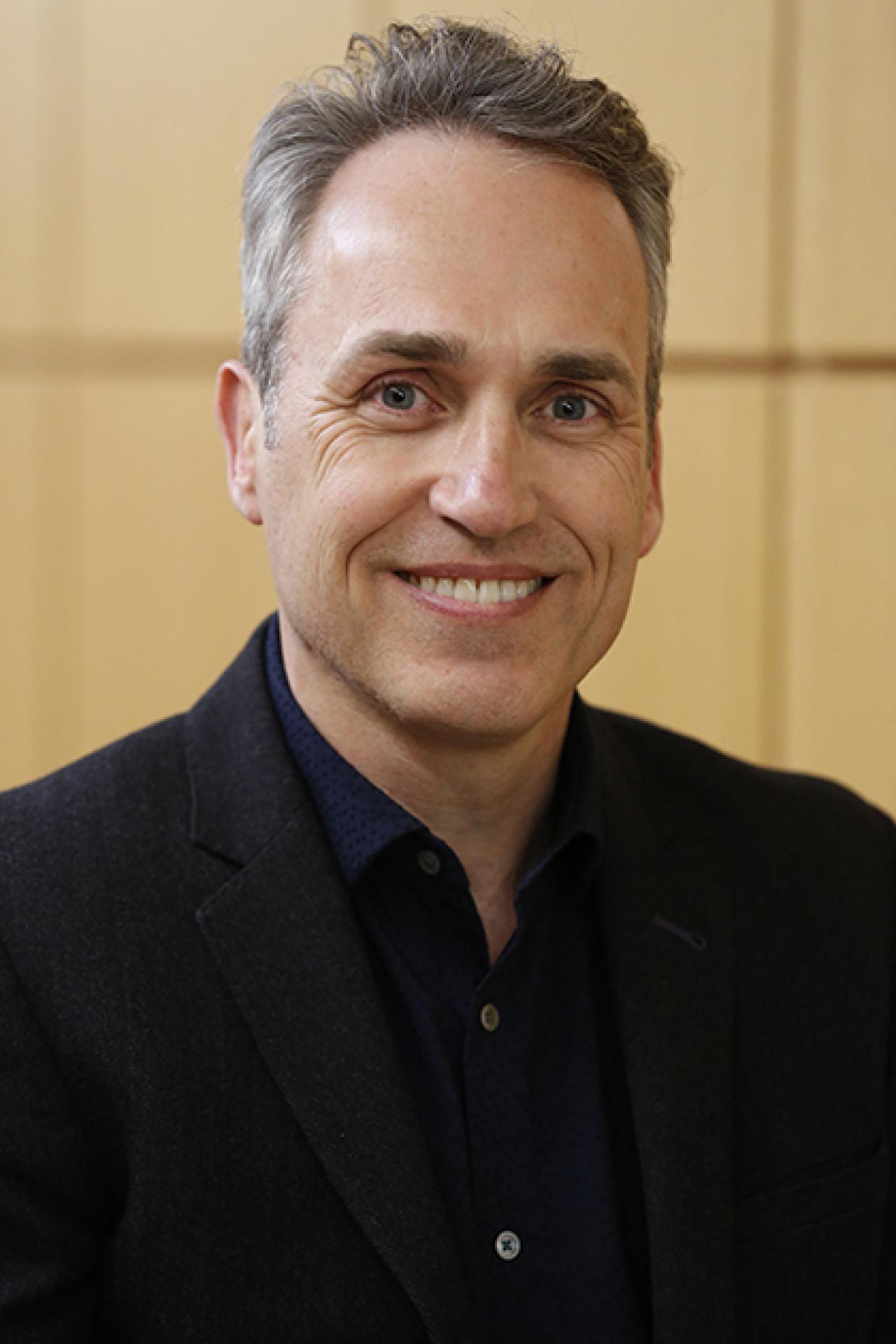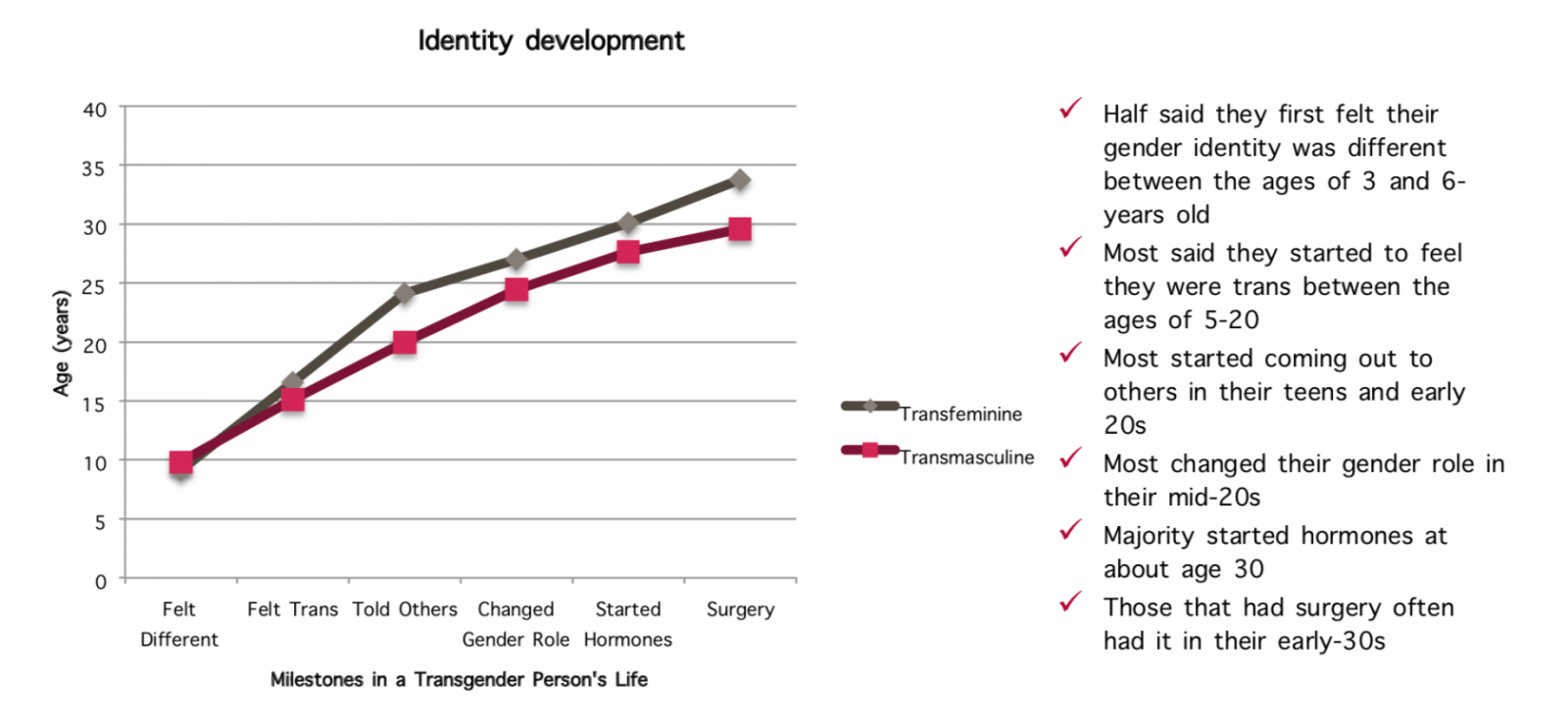As more young people are identifying as transgender-about 2 percent of American teenagers, according to the most recent study-more gender identity clinics are opening across the country.
Columbia's Gender Identity Program, which opened in 2017 in the Department of Psychiatry, offers services ranging from psychotherapy and medication management to hormone therapy and surgery to help transgender, nonbinary, and gender nonconforming children, adolescents, adults, and their families.

Access to and quality of gender-affirming health care has improved since it first became available in the United States in the late 60s, says Walter Bockting, PhD, who leads the program. "That's great progress, and for some young people, it's life-saving to have access to such medical interventions as hormone therapy and surgery. I think what has gotten lost since the recent expansion in clinics around the country is that being transgender is not only about the body. There are additional challenges in the realm of psychosocial adjustment that mental health professionals can help with."
Bockting began working with transgender people 30 years ago at the University of Minnesota, one of the first clinics in the United States to offer gender-affirming care to transgender people. As president of the World Professional Association for Transgender Health from 2009 to 2011, he helped the organization to substantially revise its standards of care to reflect a more holistic and less binary approach to transgender health. He was recruited to Columbia in 2012 and directs the Program for the Study of LGBT Health in the Department of Psychiatry and the School of Nursing.
We talked with Bockting about gender identity, the Columbia Gender Identity Program, and where transgender care is going.
What is gender identity?
Gender identity is one's basic sense of being a boy or girl, man or woman, or other gender, such as trans or nonbinary. Gender identity may differ from one's sex assigned at birth, typically assigned as male or female based on the appearance of the external genitalia at birth. Gender identity and sexual orientation are distinct components of one's overall sexual identity; gender identity is about your own gender, whereas sexual orientation is about the genders of your sexual or romantic attractions and partners.
What should everyone understand about transgender identity?
It's important to understand that gender is on a spectrum. There's evidence now from neuroscience that gender may be more of a mosaic of different characteristics, not simply either male or female.
"Our society is still very binary. Overall, we still think about sex and gender in extremely simplistic ways."
But our society is still very binary. Overall, we still think about sex and gender in extremely simplistic ways--that there are only two genders, that some people are boys even though their body is female, and that some people are girls even though their body is male. And if the sex of the brain, which is how some people think of gender identity, doesn't correspond with the sex of the body, you make an adjustment and masculinize or feminize the body through hormones and surgery.
I think it is more complicated than that, and yet a lot of people remain fascinated with the idea of changing sex in such a binary way. In reality, there is a growing generation of transgender youth and adults who identify and express their gender identity in more expansive ways.
More children and teens are accessing gender identity programs. What does that say about the state of your field?
There has been an explosion of new clinics in the past few years, making gender-affirming medical interventions more accessible at younger ages. I think this is great progress because it was really hard when there were only a few places to go nationally 10 years ago.
However, without proper specialty training, it is easy to assume that transgender care equals hormones and surgery. That's how it used to be in the 70s and 80s. People who transitioned from male to female or female to male were expected to "walk the walk and talk the talk" as a member of the other sex. In other words, passing as a cisgender woman or man was treatment's measure of success.
But once the first generation of transgender people who went through "sex reassignment" came of age in the 1990s, they returned to our clinics challenging this binary approach. They began to speak out on how confining the gender binary had become for them and that being transgender was not simply a matter of changing one's sex. Rather, their experience of gender identity was different, a unique transgender path. The importance of finding a sense of belonging in community with other transgender people became apparent. They identified the need to affirm their individual and shared transgender experience.
Today, my concern is that the advent of early medical intervention for children and adolescents has become a renaissance of this very binary thinking. If we intervene early enough, perhaps we CAN change people's sex. Indeed, puberty suppression followed by cross-sex hormones and surgery can greatly enhance a person's ability to "pass" as a member of the other sex. But how about their internal sense of self? What about the added value of being a person of transgender experience? Fortunately, at the same time, we have a parallel development of youth identifying as non-binary or genderqueer, who describe their experience no longer as a transition from A to B (male to female or female to male), but instead as "I've always been C!", referring to a different position on the gender spectrum.
"Today, my concern is that the advent of early medical intervention for children and adolescents has become a renaissance of this very binary thinking."
In the Netherlands, where early medical interventions were first developed, they were designed for a select group of children and adolescents who had a very intense, distressed reaction to puberty. In the United States, however, criteria are more relaxed and puberty suppression has quickly become a standard first step in gender-affirming care for transgender and gender non-conforming youth. Interestingly, in the Netherlands, youth who received this early treatment are now young adults, some of whom are beginning to articulate more of a transgender narrative, such as "given only two choices, yes, I fit better in the female box than in the male box, but really on a deeper level, I'm different."
Ultimately, a lot of transgender people can find themselves in the binary model of gender. But I always tell my patients that if you set out on a journey of changing your gender expression in a binary way, even if you succeed, you likely end up somewhere else on the gender spectrum. That's where I think happiness is found. For some people, it's a long tough internal struggle before they can accept that. But it's a wonderful path when you embrace it.
How does the Columbia Gender Identity Program help people?
We help people develop gender literacy, which is a broader understanding of gender identity, and gender diversity, and the lived experiences of transgender people across the lifespan. Gender identity is based on how people feel and, while stable, is hardly ever static.
We're helping them to understand the playing field and then people can think about what steps they think are going to make them feel better. That varies very much from person to person.
The stigma attached to gender non-conformity and being transgender is clearly associated with mental distress. It has a negative impact on people's mental health, whereas support from family, a sense of pride in identity, and a connection with other transgender people can buffer that impact.
Our research has shown that, in addition to the impact of social stigma, the struggle inherent to identity development can be distressing in and of itself. In other words, there truly is such a thing as gender dysphoria, a specific distress associated with an incongruence between gender identity and sex assignment at birth. But even for people who are not transgender, certain developmental periods, like adolescence, are stressful. When faced with an optimal level of stress and corresponding support, people develop resilience.
Making changes in gender expression-what people call social transition-and medical options such as puberty suppression, cross-sex hormones, and surgical procedures are all helpful tools to affirm a person's gender, but they do not necessarily address the mental health issues that may have developed as a result of dealing with chronic stigma and dysphoria. For that, a mental health component is often needed in their care.
I feel that without the involvement of mental health professionals, we're not really going to make a dent in the epidemic of depression and anxiety that we are finding among our population. We thought that times have changed, and that the younger transgender generation would not have those same high rates of anxiety and depression that we find among older adults. However, we are learning that the younger transgender and gender non-conforming people of today still report very high levels of depression, anxiety, self-injury, and suicidal thoughts.
Some parents have voiced concern that transgender identity has become a fad among young people, particularly girls. How real is this concern?
I think many parents, and some health professionals as well, are indeed concerned about this. I think today's youth are more openly exploring their gender. If there is now a broader group of kids actively exploring their gender, I think it's a great thing.
There might be adolescents who are searching for a place to belong, and they may find that place, at least for the time being, within this diverse community. To what extent they will continue to identify as differently gendered and, if so, what this means in terms of their gender expression and needs for gender-affirming care will vary. If in the process of exploring their gender identity adolescents and their parents acquire gender literacy, I trust they will make good decisions for themselves.

I do have some concerns that, if they consult with a provider who is new in this field and lacks the proper specialty training, that there may be a quick diagnosis immediately followed by hormone therapy. Again, hormones and surgery are just two tools in our larger, more comprehensive toolbox. Hormones are critical for many transgender and gender non-conforming youth and adults, but not all. The same is true for surgery.
I think it's a very positive development that there's more awareness and all this exploration of gender identity and expression. And for some adolescents, puberty suppression has greatly helped them. But I do worry about an oversimplified medical approach with decisions that have far-reaching consequences. We need more research to generate the scientific evidence that can inform these important treatment decisions.
References
Walter Bockting, PhD, is professor of medical psychology (in psychiatry and nursing) at Columbia University Irving Medical Center and a research scientist with the New York State Psychiatric Institute. He is director of the Program for the Study of LGBT Health in Columbia University's Department of Psychiatry and School of Nursing.
This article was originally published in March 2019.






